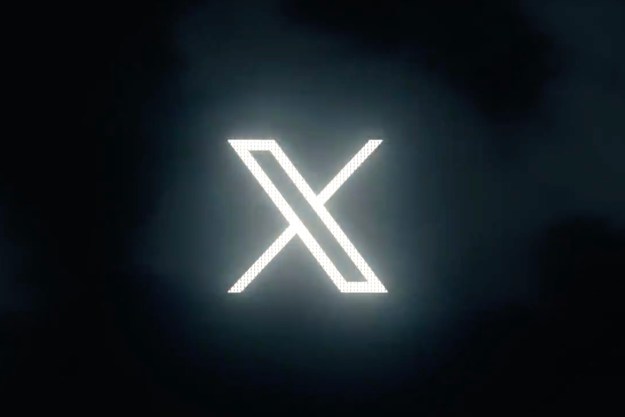The Community app seeks to make that a little more real by letting you text directly with the rich and famous, and relying on the intimacy of text messages versus social media to bring you closer to stars on the silver screen, musicians, artists, and authors. But the reality looks a bit different.
As a spokesperson for the app told Digital Trends: “Is it going to be the same texting your best friend that you go back and forth with a million times a day? No. And I don’t think people are actually looking for that interaction … it’s that personal, direct connection that if you’re an artist, that’s what you want.”
Big-name backing

The premise for the app, backed by actor Ashton Kutcher and software company Salesforce, is fairly simple. Community assigns a phone number to “anyone with an audience,” who are referred to as Leaders, according to the spokesperson. The leaders are vetted by the Community app team based on “if they have something interesting to say” and so far there are about 500 of them paying a subscription fee ranging from a few hundred dollars to thousands a month depending on the number of users they want to reach and how many follow them in the app, the spokesperson said.
Stars like Amy Schumer, Kerry Washington, Diddy, the Jonas Brothers, and Mark Cuban are just some of the “leaders” who have already signed on.
Group texts then begin, ranging from Washington asking for green juice recommendations in Toronto to Schumer having conversations about infertility based on an Instagram post that advertises “my number is my bio.” Fans respond to the texts with names of juice bars and their own experiences with IVF treatments. The Community spokesperson said the intimacy of texting is what makes these conversations different from mass tweets and Instagram Live broadcasts, even if the responses are not just to one user. Text messaging is “where you interact with the people closest to you: Your best friends, your mom, dad, siblings.”
The statistics on text messages and wide global use of WhatsApp seem to back up this thinking. SMS messages have an astonishing 98% open rate, and 90% of them are opened within 3minutes of receipt. Practically everyone has a phone capable of texting, but the audience on social media is much more limited in comparison.
There is also the issue of trolls, which are generally anonymous accounts and bots that are fairly easy to create on Twitter, Instagram, and other platforms. In theory, Community should have little to no issue with this because it’s practically impossible to have a truly anonymous phone number, and they are not nearly as easy to acquire as other types of social media accounts.
The app’s creators, Matthew Peltier and Josh Rosenchek, have also worked with major U.S. telecom providers to be able to handle the volume of texting, currently at 200 million messages since the app first started bringing on leaders and users in October 2019.
Fighting the algorithm
The spokesperson also touted the lack of an algorithm, which is used on other social media platforms and even places like YouTube to determine when you see certain posts from certain accounts. “It’s not coming directly to you, unlike a text,” they noted.
Algorithms can hurt some influencers who have huge follower counts, but don’t end up getting into their followers’ feeds.
“As a result [of algorithms], we’re seeing pages get as little as 1% of their audiences seeing individual posts,” Brendan Gahan, chief social officer at the ad agency Mekanism, told Digital Trends. “Furthermore, platforms can introduce various rules and restrictions, which can kick artists and celebs off the platform for various missteps, typically content deemed non-brand friendly.”
— Diddy (@Diddy) October 3, 2019
The algorithms can make the “blood, sweat, and tears” celebrities’ teams put into managing social media presence seem fruitless, but Community seems to negate much of the risk of that happening, according to Gahan.
Technically, a celebrity can text their million Community fans. However, the app seems geared toward a more niche outreach. When Washington asked for green juice recommendations, she only texted users who indicated they were located in the Toronto area. It stems from Peltier’s original vision, a company called Shimmur, which was aimed at helping YouTube creators upload content and touring musicians reach audiences while they were on the road. The company confirmed it does have machine learning in place to allow leaders to reach fans with specific interests as well.
Gahan said the idea itself is nothing new — celebrities, politicians, and community leaders have been using emails for this purpose for years — but “text message is really just an evolution.”
He noted the key to being successful on the app involves influencers and celebrities “making sure they’re interesting and engaging — you don’t want to come across as spammy or boring. Adding value to people who opt in is going to be key.” Gahan also doesn’t think two-way conversations are a necessity for the app to succeed because the quality and worth could come in many forms of entertainment and knowledge. To wit, People magazine just entered a new partnership with Community to reach more readers with its celebrity content; the magazine website will publish Community-centered content as well. What kind of value that brings to users of the app remains to be seen.
With the U.S. elections in full gear, Community may be tapping into a relatively unexplored area for political candidates as well, one that isn’t as invasive as robocalls but provides a far wider reach than social media or live events. In the meantime, your celebrity crush may just be joining Community and your contacts list.
Editors' Recommendations
- How to save text messages on iPhone and Android
- Elon Musk hints that he could start his own social media platform
- FCC approves ‘988’ for texting the National Suicide Prevention Lifeline
- You’re probably seeing more social media propaganda, but don’t blame the bots
- Instagram ditches plans for stand-alone Direct messaging app


